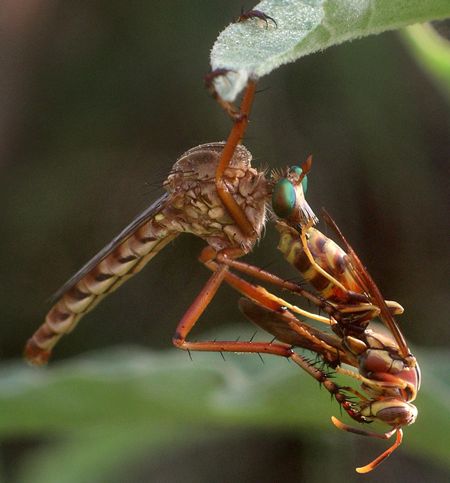by Valerie
October, 2014Hanging Thief
Robber flies are top predators in the insect world, so it is not unusual to see a hanging thief (Diogmites sp.) consuming another hunter that is at least as large as itself. The basis for the common name is obvious here: these flies tend to hang by one or two legs while using the others to hold their prey as they feast. In this case, the unfortunate quarry is a paper wasp (Polistes sp.), which is also a predator, but does not eat what it catches. Adult wasps feed on nectar, but the workers (all female) of social species capture and butcher various insects and spiders to take back to the nest and feed to the grubs. The tastefully matching colors of these two animals are merely coincidental. Many robber flies mimic bees or wasps, a disguise that helps them both avoid detection by their prey and deter birds which might otherwise attack them. Flies do not have jaws and so do not chew up their food. Instead, robber flies have a sturdy proboscis which they use to stab and then suck the liquid out of their victims. It's similar to the way mosquitoes suck blood, but on a heftier scale. |